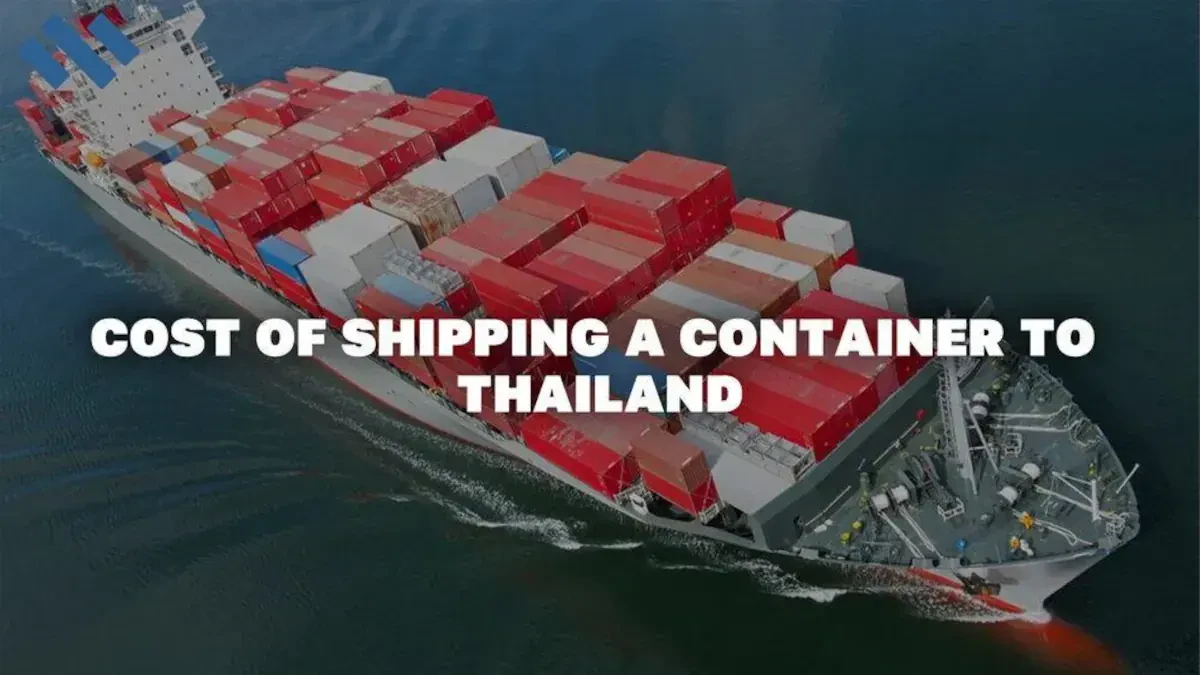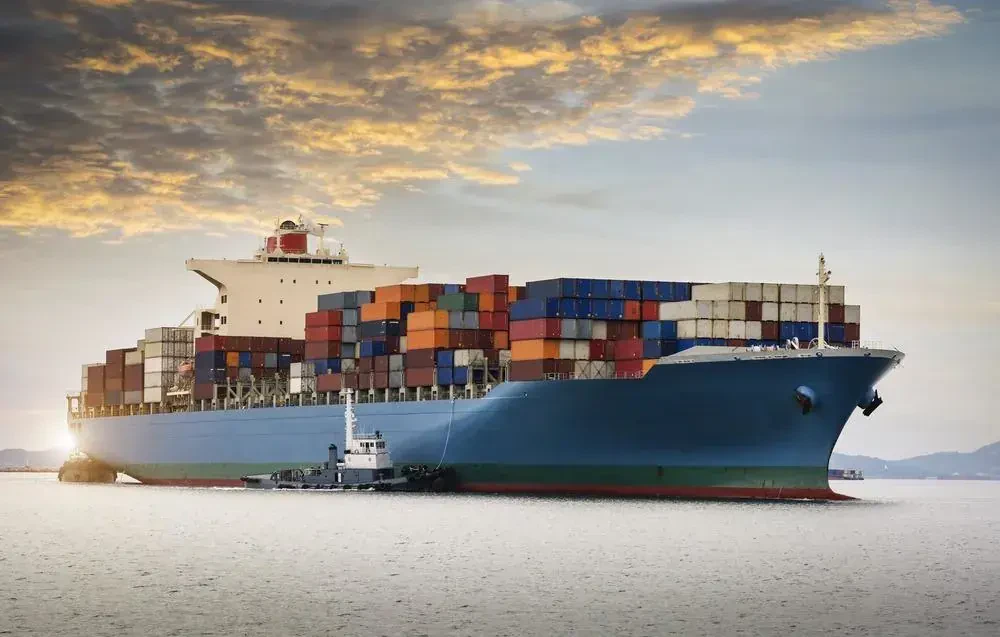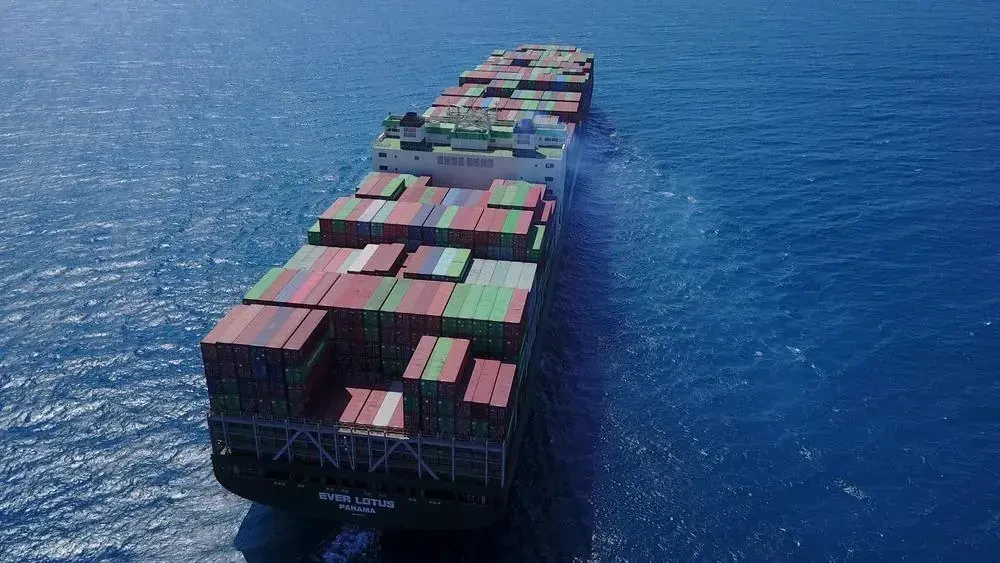Published by Chris Townsend
Last updated Nov, 14 2025

How Much Does It Cost To Ship A Container To Thailand?
Thailand is a Southeast Asian country that is known for its beautiful royal palaces, tropical beaches, and impressive Buddhist traditions. The country, which was formerly known as Siam, is now officially known as the Kingdom of Thailand.
As expert movers, our crew at Three Movers is one of the top international companies that engages in the hauling of containers to the Kingdom of Thailand among other regions in the world. We're aware that a significant amount of people faces difficulties regarding the relocating. Hence, we've put up a guide that'll aid concerned individuals to understand how to calculate the cost of moving.
Factors that Affect the Cost
The cost of shipping a container across international borders is influenced by certain vital circumstances. For instance, an increase in the weight or volume of the goods will cause an increase in the cost of relocating just as an increase in the hauling distance will do the same. In addition to that, making use of a privately owned port instead of a public port will require you to pay a higher cost of shipping. Employing air cargo transportation rather than sea cargo transportation will also considerably increase the cost of shipping.
Similarly, relocating between August and September will substantially rain up the cost of international moving due to higher demand for shipments. Thus, this period is referred to as the "peak season".
Therefore, the primary factors that affect the cost of hauling are the weight or volume of the goods, distance, freight, international service, freight forwarders, destination port, medium of transportation, and season.
Which Size of Container is Most Suitable for Me?
Depending on size, there are two types. These include the 20 ft and the 40 ft container. The 20 ft is roughly the size of three bedrooms. This fact indicates that it can contain 4000 shoeboxes. On the other hand, the 40 ft container can contain 8000 shoeboxes, which is twice the amount of shoeboxes that can be moved by the 20 ft container.
You should choose a relocating based on the weight or volume of your goods rather than the price of the container. It's also noteworthy that a 40ft container doesn't always evoke a cost that is twice that of a 20ft container.

Average Moving Rates Estimates

FCL shipping is best for transporting lots of boxes, pallets and anything which will require a full container of up to 45,000lbs.
Full Container Load (FCL) Shipping Rates | |
|---|---|
| 20 ft Container | $575 |
| 40 ft Container | $795 |

LCL shipping is more affordable way to transport less than container load shipments to Thailand.
Less Than Container (LCL) Shipping Rates | |
|---|---|
| LCL | $54/CBM |
| Personal Effects | $520 |
| Household Goods | $655 |

International house moving to Thailand services - quick, easy and cheap.
International House Moving Costs | |
|---|---|
| Partial House (2000Lbs & Less) | $690 |
| 1 Bedroom (3850 Lbs) | $1560 |
| 2 Bedroom (4500 Lbs) | $2565 |
| 3+ Bedroom (8750 Lbs) | $3525 |

International auto transport services to Thailand via RoRo and container ships. Ship cars, trucks, suvs, atv's, boats, RV's, heavy equipment and more.
Container Car Shipping | |
|---|---|
| Sedan via RORO | $895 |
| SUV via RORO | $1040 |
| Sedan (Container) | $1370 |
| SUV (Container) | $1460 |
Understanding the Different Types of Cargo Transportation
Similar to the four major means of transportation, the common types of cargo transportation are air freight shipping, ocean freight, land freight, sea freight, and rail/train transportation. Moving goods to the Kingdom of Thailand from regions outside Asia commonly involves all four of the major means of cargo transportation.
Air cargo transportation is no doubt the fastest means of moving cargo. On the negative side, it's the most expensive means of cargo transportation. Although sea cargo transportation is relatively slower than air cargo transportation, it has a reputation of being cheaper and is capable of conveying more shipments. In all considerations, rail/train cargo transportation takes a middle stand.
Thus, it's essential to choose your means of cargo transportation based on your priorities.
Additional Costs
The average rate of customs duty in Thailand is 7.2%. About one-third of Thailand’s MFN tariff schedule requires the payment of duties of less than 5%. Meanwhile, 30% of tariff lines are MFN duty-free, including, electronics, industrial machinery, and paper. Shipping a container to Thailand may require the payment of the following charges:
- Thai custom fees
- Container inspection fees
- General rate increase
- Inland delivery charges
- Quarantine fees
- Insurance fees
- Thai Import Tax
What's Next?
Since you've been apprised of how the rates of shipping a container to Thailand are evaluated, you require a quote to begin your shipping endeavor. You can obtain a well-detailed quote free of charge by filling out our web form or calling us on (888) 202-0036.

Find Cargo Containers For Freight Transport & Relocation
Frequently Asked Questions
General customs clearance procedures for imports in Thailand require the submission of a Customs’ import entry form. The form should be accompanied by standard shipping documents, which include a commercial invoice, packing list, bill of lading/airway bill, and letter of credit. Import licenses are required for the importation of many raw materials, petroleum, industrial machinery, textiles, pharmaceuticals, firearms and ammunition, and agricultural items. Thailand has eliminated its requirement of a certificate of origin for information technology imports under the WTO Information Technology Agreement. The use of a freight forwarder to deal with import customs clearing in Thailand is highly recommended.
The bill of lading is a legal document that aims to assist both the shipper and carrier understand the conditions of transporting cargo. It serves the function of being a title of ownership of the goods to be shipped. It is also a receipt in the hands of the carrier that is transporting the goods. Finally, it is an agreement with all the terms and conditions surrounding the transportation of the cargo.
Prohibited goods are goods for which the import into Thailand is prohibited. Any person who imports prohibited goods is considered as committing offenses and subject to penalties indicated in the relevant national legislation. Imports of used motorcycles and parts, household refrigerators using chlorofluorocarbons (CFCs), refurbished medical devices, gaming machines, and computer peripherals are prohibited. Further information about prohibited and restricted goods can be obtained from the Thai Customs website.
Thailand’s average Most-Favored-Nation (MFN) applied tariff rate is 10 percent. Thailand’s average MFN applied tariff rate is 29% for agricultural products and 7% for non-agricultural products. The highest ad valorem tariff rates apply to imports competing with locally produced goods, including automobiles and automotive parts, motorcycles, beef, pork, poultry, tea, tobacco, flowers, beer and spirits, and textiles and apparel. Thailand applies a 10 percent tariff on most pharmaceutical products, including almost all products on the World Health Organization’s list of essential medicines, with the exception of some vaccines, antimalarials, and antiretrovirals, which are exempt. MFN applied tariff rates on imported processed food products range from about 30 percent to 50 percent.
Modern shipping containers, although watertight, are also ventilated. This is to make the shipping of livestock, animals, and plants possible. However, certain containers are constructed for specific purposes which might need the container to be airtight. Such containers aren’t ventilated. Check with the shipping container provider to ensure your container meets your specific needs.
A broker is an agent that conducts business with shippers on behalf of carriers. They are used when the carrier doesn’t want to be involved with the details of conducting business with clients. A Non-Vessel Owning Common Carrier (NVOCC) is a company or firm that transports cargo on behalf of shippers without owning a ship. They use the services of actual carriers to transport the cargo they have collected from shippers. They might have their own containers and rent a portion of the haul of ships. They issue bills of lading in their name.
The space required for a home delivery depends on the type of shipping container being delivered. A standard 20ft container will require twice its length space for delivery, particularly when it will be done by truck. This means that it will need 40ft of length space and 15ft of width and height space. A 40ft container will require an 80ft length space, and 15ft width and height space. If this space cannot be provided on your property but you have just enough for a container, then consider having the container delivered by crane. It might cost more but it will require less space.
Tracking a container while in transit is gradually becoming an industry standard. It gives a form of insurance to the shipper that the cargo is safe. GPS trackers are used to track containers as they give immediate feedback. You can even hire a tracking servicing company to track and keep tabs on your shipment.
Some container delivery companies don’t insist on your presence while others do. Consult the company to know their unique policies about delivery. However, it is advisable that you make yourself present either way because delivering a container is a delicate business. You might need to present your permit for having a container to local law enforcement. There might also be a need for you to make extra space for the container.
Household goods and personal belongings can be shipped to Thailand, typically via sea freight in a full or shared container. Proper packing, labeling, and documentation are important to ensure smooth customs clearance and to protect items during transit. Some items may require permits, so checking Thai import regulations beforehand is recommended.


